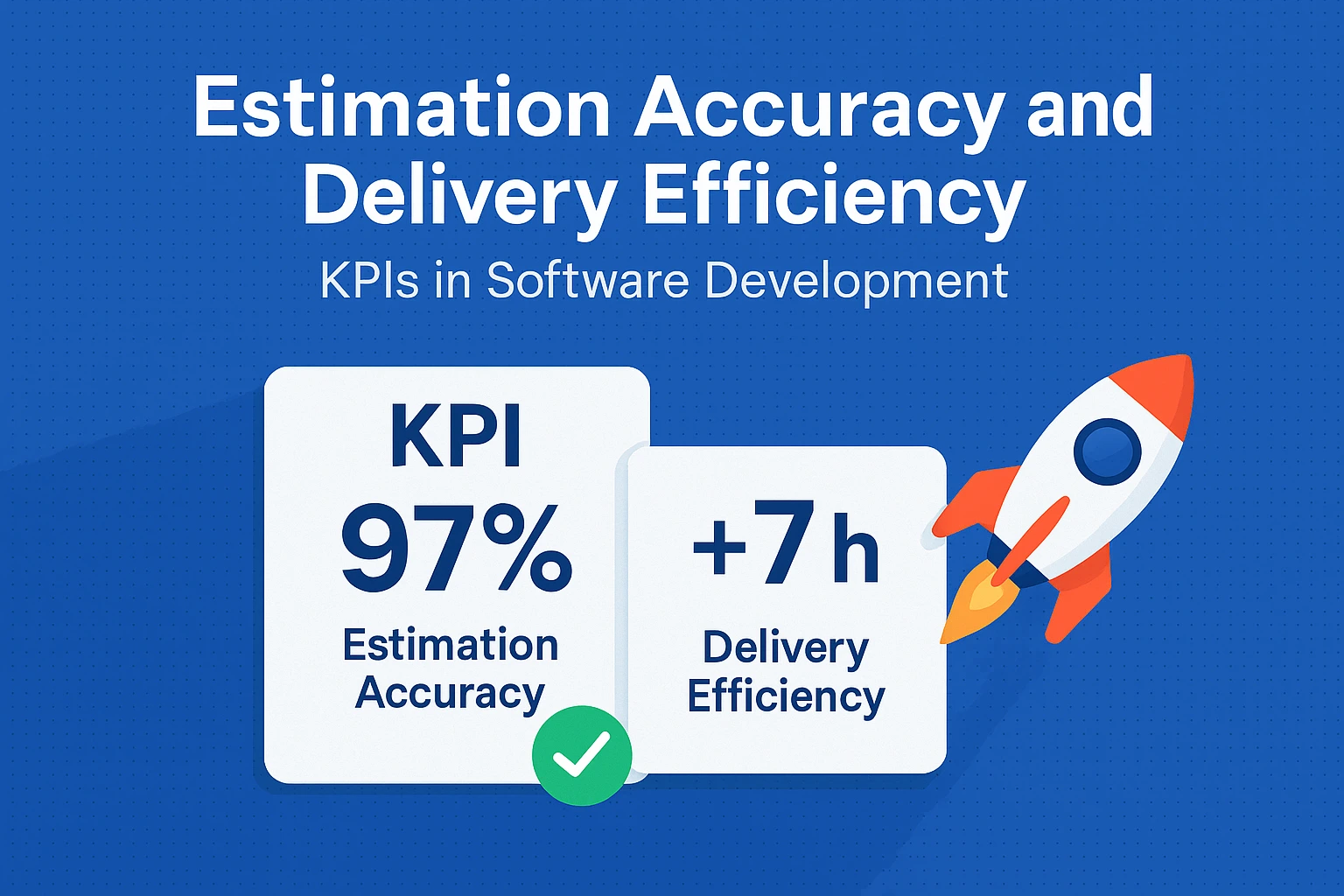At NetForemost, we build software with a clear purpose: to help our clients grow faster, solve meaningful problems, and deliver digital products that people actually use and love. Behind that mission lies a powerful operating principle — measuring and continuously improving our estimation accuracy and delivery efficiency.
These two KPIs might sound operational, but their impact goes far beyond internal dashboards. They directly affect service quality, customer satisfaction, and our long-term growth as a technology partner.
In this post, we’ll explain why these metrics matter, how we apply them, and how they’ve shaped our culture and delivery approach at NetForemost.
1. The KPIs That Power Predictable Excellence
We measure two critical indicators in every project cycle:
- KPI (Estimation Accuracy): The percentage of story points completed versus those planned.
- Profitability (Delivery Efficiency): The time variance between actual hours worked versus hours estimated.
This dual focus helps us answer two key questions:
- Did we deliver what we said we would?
- Did we use time and resources efficiently to do so?
Example from our portfolio:
In one our many engagements with NaturalSlim, we were trusted to Building a multilingual knowledge hub that safeguards quality and consistency across 7 countries and 100 + consultants
Thanks to strong estimation accuracy and resource efficiency, we were able to launch their product within the agreed timeline — driving immediate impact on their business. The alignment between planned and delivered functionality helped NaturalSlim confidently scale our client’s brand across LATAM and North America.
2. Why Estimation and Delivery KPIs Matter for Client Success
A. Client Trust and Transparency
Clients rely on us to be predictable. When we consistently meet estimates, they gain confidence in planning launches, campaigns, or internal change management. A study by McKinsey found that projects with accurate estimations are 30% more likely to meet budget and timeline goals — leading to higher stakeholder satisfaction and ROI.
B. Quality Over Crunch
Tracking delivery efficiency helps us avoid “hero mode” development — when teams rush to deliver on time by overworking. Instead, our process identifies where time is being lost and how we can improve the way we scope, develop, or test software.
C. Growth Through Operational Excellence
Internally, these KPIs allow us to scale. Whether building for startups or Fortune 500 companies, through our nearshore development model, we make data-driven decisions about capacity, hiring, and pricing — all while improving throughput without burnout.
3. How We Handle Exceptions with Communication and Ownership
No project is perfect. Even with the best estimations, unexpected challenges — like third-party integration delays or shifting product requirements — can impact delivery.
At NetForemost, communication is a core value. When delivery risks arise, we emphasize early, honest, and constructive updates:
Here’s what good communication looks like:
- Early alerts: “We’ve identified a risk with the Stripe integration that may affect the timeline. We’re proposing a mitigation plan and will update estimates accordingly.”
- Impact clarity: “This may delay the MVP launch by 3 days, but we can preserve the original feature set.”
- Collaborative replanning: “If needed, we can de-scope one feature to maintain your go-live date.”
In contrast, radio silence or last-minute surprises erode trust — no matter how good the development quality is.
4. Recommendations for Teams and Clients
Whether you’re building with NetForemost or managing internal software teams, here’s how to get the most from estimation and delivery metrics:
- Use historical data to refine future estimates.
- Involve developers in the estimation process to boost accountability and accuracy.
- Celebrate positive profitability — but not at the cost of low KPI scores. Time efficiency is only valuable when paired with actual delivery.
- Create a culture where it’s safe to communicate delays early, without fear of blame.
5. Final Thoughts: Predictability Is the Foundation of Trust
In software development, trust isn’t just built on lines of code — it’s built on predictability. At NetForemost, tracking estimation accuracy and delivery efficiency isn’t about micromanagement — it’s about helping our teams grow, helping our clients succeed, and powering a culture of ownership and transparency.
These values are why companies from fintech to health to education rely on us not just as a vendor — but as a true partner.
Ready to build with predictability and purpose?
Let’s scope your next project — and hit every milestone together.






